Robbie Ray Doing it His Way With Fly Balls and a Fourth (or Fifth) Pitch
Call it whatever you like, but it’s not easy being a D-backs starter lately. Allen Webster followed up a strong debut with 9 ER in his next 9.2 innings, and Jeremy Hellickson, Rubby De La Rosa and Chase Anderson sport ERAs of 5.45, 5.35 and 5.35 in the last month, respectively. Through all the murk, though, Robbie Ray stands with a 2.08 ERA in the last month in five starts, and with the brilliant spot start he twirled in Denver in May, that all shapes up for a 1.98 ERA backed by an impressive 3.10 FIP.
Is it all fairy dust for the pitcher that finished the spring at a 6.35 ERA in 17 innings? At the very least, his results after 6 starts with Arizona looks a hell of a lot better than his tenure with the Tigers, who saw him pitch to a 8.16 ERA last year (6 starts, 3 relief appearances) that was every bit as bad as that implies. We knew he looked different in the spring, throwing a breaking ball that was new and also a single pitch — and the difference between two pitches and three has been enough to make or break careers before. Moving Didi Gregorius for Ray and Domingo Leyba was a very reasonable move, and since it was predicated on adding to a growing cadre of lottery ticket pitchers on the cusp of the majors, it would have been that way regardless of what happened next. Score one for the D-backs front office, though: that trade is looking pretty damned good right now.
Ray stands out in a lot of ways on this pitching staff, and it’s not just the giant chasm of results. He’s left-handed, not a small thing for a team that can trace much of Rubby De La Rosa’s struggles to a handful of left-leaning lineups, especially in the division. And considering the steps that other D-backs pitchers have taken toward ground balls, including fly ballers Anderson and Hellickson, it’s also pretty incredible that Ray’s 43% ground ball percentage is even higher than the 41% mark he coughed up with Detroit.
Shooting the Moon
It’s working. And that may be because Ray’s fly ball percentage isn’t just high; it’s high enough that it starts to be an asset, the way it was for Matt Cain for so many years with the Giants. Fly balls are good when you’re so consistently high on the bat that you start trading some well hit ground balls for some popups. And while Cain is one of a very few pitchers to consistently post below average home run rates despite a high fly ball percentage, it’s at least possible that Ray’s application to that club will be accepted.
I ran all qualified starting pitchers from last season, comparing their fly ball percentage as reported at FanGraphs against those pitchers’ results on fly balls at Baseball-Reference. The result: a fairly weak correlation that followed the general rule that the higher the fly ball percentage, the lower the batting average that hitters logged against those fly balls. The -0.234 figure I got for the correlation I got from Excel is not all that impressive, but hey. Here is how it looks with the pitchers ranked from highest fly ball percentage (left) to lowest (right):
Hey, all right. Fun times. Since that made only slightly more than no sense to me, and since fitting a straight line was also not all that satisfying, I tried averaging some of these guys together. There were 88 qualified pitchers in this sample, so I tried 11 buckets of 8 pitchers, grouped according to rank in fly ball percentage.
Much better. If this is anything like ground ball studies we’ve seen in the past it makes a ton of sense that the correlation isn’t very strong, but the trend line seems pretty obvious once you get a good look at it. With ground ball percentage, there’s really no difference between having a mark that is above average and one that is one of the very lowest; once you reach a certain threshold, it doesn’t seem to matter all that much. Get a well above average or elite GB%, though, and it starts to pay dividends; that’s why the batting average against for Brad Ziegler ground balls is about 40 points lower than for others’ ground balls, even over several years.
In this little exercise, the cutoff between the first cohort of 8 qualified pitchers and the second one was the difference between Jake Peavy (42%) and Max Scherzer (41.6%). Now would be a good time to remember that Ray’s fly ball percentage has been 43% this season, and was in the same neighborhood last year (41%), although that would have ranked him “just” tenth in baseball last season if he had qualified. Ray may be onto something here.
It’s Complicated
If sorting his breaking ball out so that it was one pitch was part of why Ray looked good in spring training, I’m totally confused now by what he’s done since returning to the majors in early June. Check out this game to game pitch frequency table from Brooks Baseball:
If you’re anything like me, your reaction to that was something like:
- WTF? A sinker?
- Oh, man. Not this breaking ball all over the place again.
- Seriously, what the hell is going on.
Okay, so, sinker wise — we knew this had become something of a team wide priority. Still, this is a pretty big surprise. As we saw above, Ray has had a ton of success while generating a ton of fly balls, and a dip in that FB% could be costly, in that Ray could slip into that unhappy area where he gets none of the benefits of being an elite fly baller, but he’s still yielding a ton of fly balls that are eligible for all-expenses-paid vacations over the fence. Why mess with the sinker?
Not that I don’t trust Harry Pavlidis & Co. over at Brooks, but I took a look at the pitch to pitch data myself. There definitely is a pretty big difference between some fastballs and others, and even the PITCHf/x algorithm called 13 of Ray’s fastballs sinkers. Another 20 were tagged by the algorithm as unidentified fastballs (“FA”), and the Brooks team found another 19 so-called four-seamers that seemed to fit, as well. There’s a difference of about 3-4 inches of vertical movement on the sinker, and a noticeable drop of 2-3 mph on them, too — this is real. But (and stop me if this sounds familiar), it’s not like there’s a glowing dividing line between the two pitches. Once again, kind of all over the place.
As with Ray’s changeup, he’s not generating many misses with the sinker, and it’s not hard to see why. The thing is not really staying in the strike zone, starting like many of Ray’s pitches in that up and away area, and having an average of almost 11 inches of horizontal movement that runs the sinker off the plate away from right handed batters. For context, the strike zone is two feet wide. The horizontal movement on Ray’s sinker is almost half the size of the strike zone. WTF? I know that “amazeballs” isn’t a word, but: those are literally amazeballs. It may be that Ray and his catchers are still figuring out what to do with the sinker, but so far, it’s been called a ball a whopping 46.2% of the time. It’s kind of like Ray’s changeup, but maybe more like his changeup’s giant, extremely athletic cousin. That will be fun to watch.
The breaking ball is oh, so confusing now. Brooks has it down: he’s thrown the big, loopy version of the pitch more than spring training would have predicted, and like the game-to-game pitch frequencies suggest, he’s thrown it more in some games than others, especially on June 9th. But it’s still kind of a sliding scale, and especially in the other 4 starts in June, it’s not really like he’s only thrown one or the other. Still, that’s how it’s classified at Brooks, and you can see that in terms of per-game averages, the movement on each version of the breaking ball is pretty much the same. Pretend you’re looking at the zone from the umpire’s perspective, not Ray’s.
Again, Brooks has it classified as a curveball or a slider for each game, the curve on the 9th and 20th of this month, and the slider for the other four games. But that’s not really the full story; like last year, it’s kind of all over the place within each start. Here’s a scatter plot with similar axes to show you what I mean, using data from Baseball Savant (where the MLB algorithm has classified all of them as sliders):
Maybe the best explanation for this isn’t that Ray has a range of movement for the breaking pitch; maybe it’s that he hangs more than you’d like, and they end up catching the air and flying away. It doesn’t look like that to me, though. Of the dots here, it’s the orange ones scattered up to the right that are the ones with the most spin; sorting by spin rate, there’s a pretty decent gap between the pitches with 690 or fewer rotations per minute (3.5 or fewer inches of vertical movement) and 980 or more rotations per minute (4.5 or more inches of vertical movement). Also, if any of these were curveballs, we might expect them to, say, break downward more than a spinless pitch (0,0 is where we’d expect a spinless pitch). There’s no rhyme or reason I can trace to velocity, but I do think he’s doing this on purpose. For what it’s worth, the 24 pitches have been 10 balls, 4 fouls, 3 called strikes, and 2 swinging strikes… and they’ve been put in play 5 times, all outs.
Since I know how you’re curious about how these break out start to start…
Yup. The gray is the start on the 9th in Dodger Stadium, and the blue is Ray’s start at home against the Padres on the 20th. If it’s any consolation, the green was also against the Padres at Petco this last turn; pretty sure those guys were a little confused, too.
Keep Away
If Ray’s breaking pitch (Raynbow?) and new sinker are fascinating, there’s another little thing that isn’t too far behind: batters have really only been able to take him to left field, and that’s not because lefties aren’t hitting him. LHH have a .320 batting average against Ray so far this season, but that may be because they’ve sold out in those at bats — Ray pitches them away, and they follow him there. From ESPN Stats & Info:
Ray is still living away from righties, as well, and although the results haven’t been quite as one dimensional for hitters, the strategy still favors fly balls; by staying not only high but away, Ray seems to make it so that ground balls are highly unlikely. It’s not too often we see a batter extend his arms for a pitch out on the top corner away, and getting up over the ball there seems like a tough task.
It may be that Ray and his catchers are still figuring out what to do with the sinker, but so far, it’s been called a ball a whopping 46.2% of the time. On a rate basis, it’s also been thrown about twice as often against RHH as LHH, meaning that sucker — which, remember, is breaking almost a foot to Ray’s arm side — is not that touchable for RHH. This is something to watch for, because it’s almost too much movement to be useful against RHH, unless they aren’t picking up that it’s a different pitch. I didn’t, so maybe that’s not really a stretch?
From Brooks, it looks like Ray has thrown everything to everyone in his last three starts since the sinker started making more than a few appearances per start:
The only thing you can count on with Ray, apparently, is that he’s not going to try throwing his changeup against LHH, saving that as an out pitch against RHH. The sinker is making more appearances against RHH, also — and with those two pitches (which have similar movement) being thrown a combined 8% of the time against LHH and 30% of the time against RHH, it’s more four-seamers and quite a lot of breaking balls against lefties (don’t read into the distribution of curves versus sliders).
What is going on exactly? I’m not really sure. But this isn’t a matter of a pitcher trying to find himself, necessarily — he’s doing a fantastic job in his time in the majors this season, and whatever he’s doing, he should probably keep doing it. If we’re kept guessing, maybe batters are, too — and so maybe it’s the changing, and not the changes, that has earned Ray his early success.
6 Responses to Robbie Ray Doing it His Way With Fly Balls and a Fourth (or Fifth) Pitch
Leave a Reply Cancel reply
Recent Posts
@ryanpmorrison
 Congrats to @OutfieldGrass24 on a beautiful life, wedding and wife. He deserves all of it (they both do). And I cou… https://t.co/JzJtQ7TgdJ, Jul 23
Congrats to @OutfieldGrass24 on a beautiful life, wedding and wife. He deserves all of it (they both do). And I cou… https://t.co/JzJtQ7TgdJ, Jul 23 Best part of Peralta’s 108 mph fliner over the fence, IMHO: that he got that much leverage despite scooping it out… https://t.co/ivBrl76adF, Apr 08
Best part of Peralta’s 108 mph fliner over the fence, IMHO: that he got that much leverage despite scooping it out… https://t.co/ivBrl76adF, Apr 08 RT @OutfieldGrass24: If you're bored of watching Patrick Corbin get dudes out, you can check out my latest for @TheAthleticAZ. https://t.co/k1DymgY7zO, Apr 04
RT @OutfieldGrass24: If you're bored of watching Patrick Corbin get dudes out, you can check out my latest for @TheAthleticAZ. https://t.co/k1DymgY7zO, Apr 04 Of course, they may have overtaken the league lead for outs on the bases just now, also...
But in 2017, Arizona ha… https://t.co/38MBrr2D4b, Apr 04
Of course, they may have overtaken the league lead for outs on the bases just now, also...
But in 2017, Arizona ha… https://t.co/38MBrr2D4b, Apr 04 Prior to the games today, there had only been 5 steals of 3rd this season (and no CS) in the National League. The… https://t.co/gVVL84vPQ5, Apr 04
Prior to the games today, there had only been 5 steals of 3rd this season (and no CS) in the National League. The… https://t.co/gVVL84vPQ5, Apr 04
Powered by: Web Designers@outfieldgrass24
 Old friend alert https://t.co/H8CeVQ90fG, 14 hours ago
Old friend alert https://t.co/H8CeVQ90fG, 14 hours ago RT @kbernot: Drank a lot of exceptional beers this year. Here are my top 10, for @CraftBeerBrew. https://t.co/cSgsipgZdD, Dec 05
RT @kbernot: Drank a lot of exceptional beers this year. Here are my top 10, for @CraftBeerBrew. https://t.co/cSgsipgZdD, Dec 05 Piss off https://t.co/eb6nxEkWJt, Dec 03
Piss off https://t.co/eb6nxEkWJt, Dec 03 Not a moment too soon for a whole host of reasons https://t.co/Y4t76VWAAp, Dec 03
Not a moment too soon for a whole host of reasons https://t.co/Y4t76VWAAp, Dec 03 Congratulations to K.L. and the Hops! There's an emphasis around the organization about being more than just a base… https://t.co/seFcjgViLU, Dec 03
Congratulations to K.L. and the Hops! There's an emphasis around the organization about being more than just a base… https://t.co/seFcjgViLU, Dec 03
Powered by: Web Designers

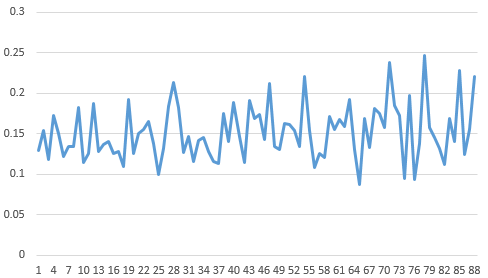
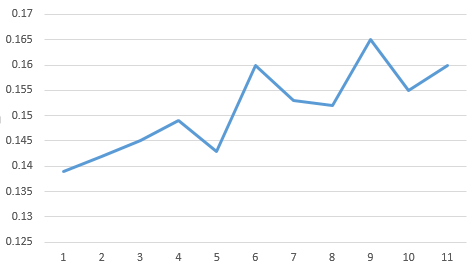
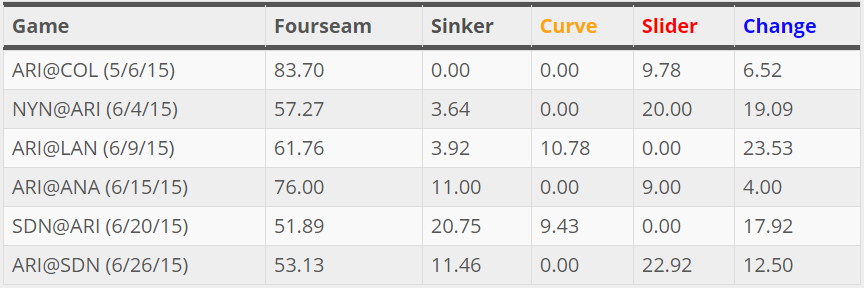
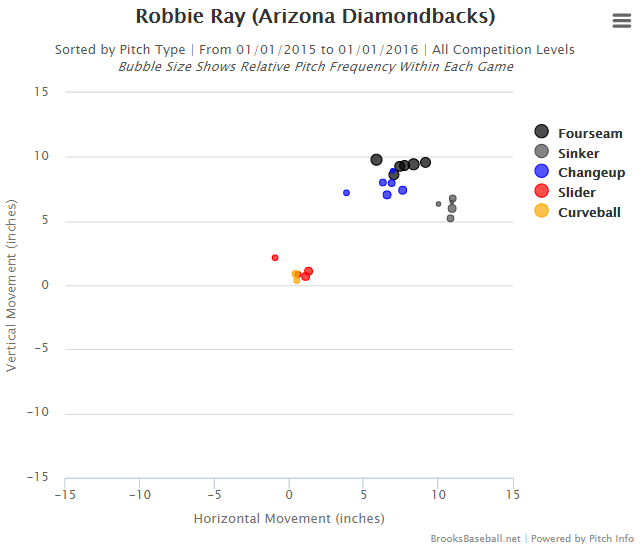
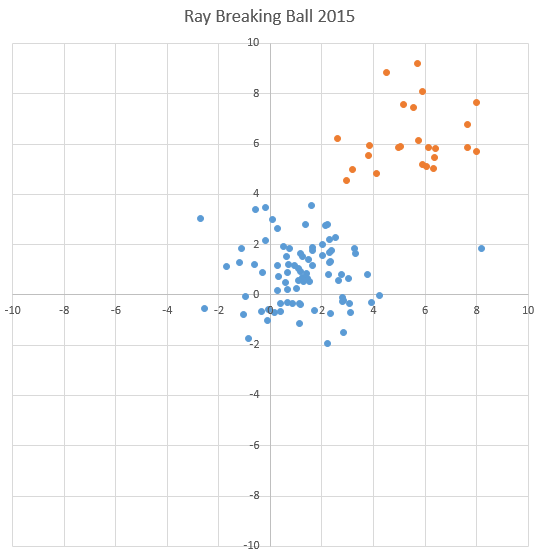
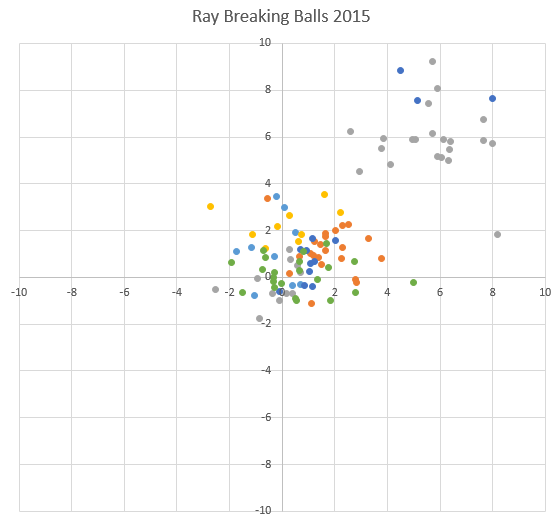
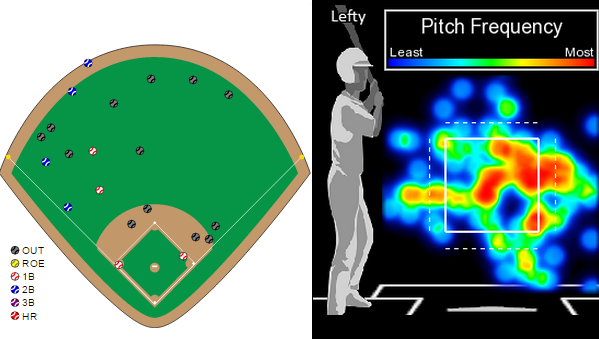
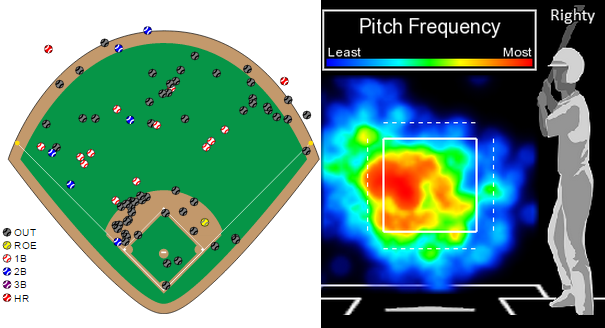





Nick Ahmed’s hitting stats are identical to Didi’s so far this year(Both have exactly 4 HR’s, 16 RBI’s and are hitting around .230) so the D-Backs were able to trade Didi without any degradation to the Major League team.
But, in reality, the D-Backs are just replacing Trevor Bauer (who the D-Backs traded to “get” Didi) with Robby Ray. The jury is still out on this one. Bauer is starting to have some success in Cleveland…..
I think the Bauer trade was in a similar league with the Touki trade, though not quite as bad. But that is a sunk cost from a previous FO so I would disregard it.
Ahmed is doing similar things offensively to Didi while providing superior defense so that was an upgrade, though at the time I don’t know if they were counting on Ahmed to fill the hole.
Robbie Ray could be pretty good. He is in the same boat with RDLR in that they both have #1/#2 potential, but could both end up not even being rotation material. In the last few turns the rotation both are doing great. I think both will stay in the rotation for the rest of the year and hopefully at least one of the two pans out.
Its a close call on defense between Ahmed and Didi. I would give a slight edge to Ahmed, but not by much. Didi is a plus defender as well…
This year Ahmed has been almost twice as valuable defensively and even though defensive metrics are fickle and SSS applies that passes the eye test for me. Didi is great, but Ahmed is gold glove caliber.
yeah to all this. Plus his first pitch strikes.
[…] a whole lot has changed since I wrote about Ray’s sinker a couple of weeks ago and worked in an update in the never-ending saga that is the nature and break […]